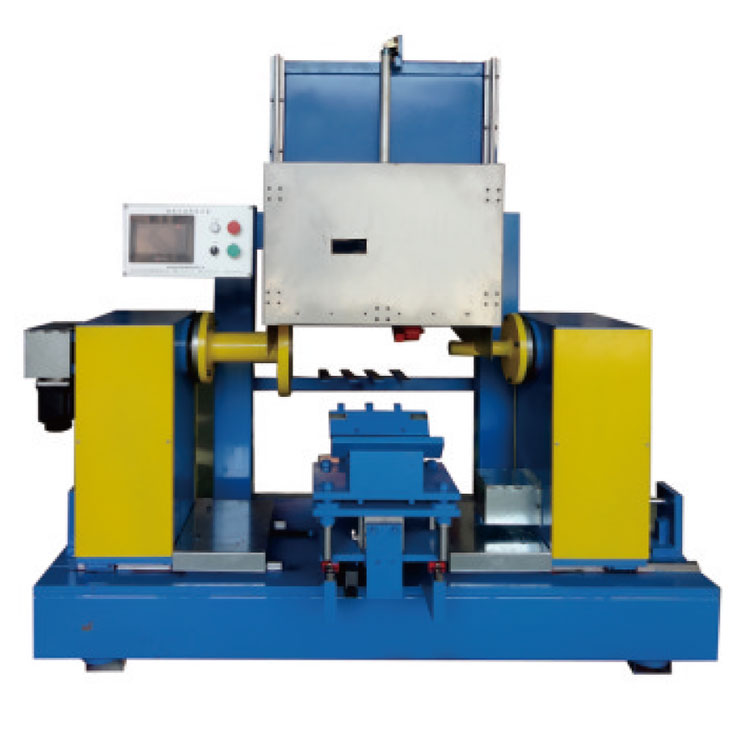Functions of an LPG Cylinder Welding Machine
2024-07-15
An LPG (liquefied petroleum gas) cylinder welding machine is a specialized piece of equipment used in the manufacturing process of LPG cylinders. Here’s an overview of its functions, components, applications, and considerations:
Functions of an LPG Cylinder Welding Machine
1. Seam Welding:
- Automatic Welding: Performs automated seam welding around the circumference of the LPG cylinder body.
- Consistency: Ensures uniform and high-quality welds to meet safety and regulatory standards.
2. Handle and Base Welding:
- Attachment Welding: Welds handles, base rings, and other fittings onto the cylinder body.
- Precision: Ensures secure attachment of components for structural integrity and safety.
3. Leak Testing:
- Quality Assurance: Includes integrated leak testing mechanisms to verify the integrity of weld seams and fittings.
- Safety Compliance: Ensures that each cylinder meets safety standards and is leak-free before distribution.
4. Automation and Control:
- PLC Systems: Utilizes programmable logic controllers (PLCs) for precise control of welding parameters, cycle times, and quality checks.
- Integration: May be integrated into automated production lines for efficient and continuous manufacturing processes.
Components of an LPG Cylinder Welding Machine
1. Welding Head:
- Electrodes: Conductive elements that deliver electric current to create the weld.
- Positioning Mechanism: Allows adjustable positioning for different cylinder sizes and welding configurations.
2. Welding Power Source:
- Transformer or Inverter: Converts electrical power into suitable welding current (AC or DC) for seam welding and component attachment.
- Control Panel: Includes settings for current, voltage, and welding speed adjustments.
3. Handling System:
- Conveyor System: Transports cylinders into and out of the welding station.
- Rotary Fixture: Rotates cylinders for 360-degree welding operations around the circumference.
4. Leak Testing Unit:
- Pressure Testing: Applies pressure to cylinders and monitors for any pressure drop, indicating potential leaks.
- Visual Inspection: Includes visual inspection systems to detect weld defects or anomalies.
5. Safety Features:
- Emergency Stop: Instantly halts operations in case of emergencies or malfunctions.
- Protective Guards: Ensures operator safety by guarding against sparks, UV radiation, and heat generated during welding.
Applications of LPG Cylinder Welding Machines
1. Manufacturing Facilities:
- LPG Cylinder Production: Used in factories dedicated to manufacturing LPG cylinders for domestic, commercial, and industrial use.
- Production Capacity: Capable of handling high-volume production to meet market demands.
2. Quality Assurance:
- Safety Standards: Ensures compliance with international standards (e.g., ISO, EN) and local regulations governing LPG cylinder manufacturing.
- Reliability: Produces cylinders with consistent quality and performance characteristics.
3. Customization and Flexibility:
- Variety: Supports customization of cylinder sizes, designs, and specifications based on customer requirements and market preferences.
- Adaptability: Adapts to technological advancements and industry innovations for improved efficiency and product quality.
Considerations for Selecting an LPG Cylinder Welding Machine
1. Capacity and Production Rate:
- Output Requirements: Choose a machine that matches production volume needs, considering cycle times and efficiency.
- Scalability: Evaluate scalability options to accommodate future production expansions or changes in market demand.
2. Welding Technology:
- Type of Welding: Select between resistance welding (spot welding, seam welding) or other welding techniques based on cylinder material and design specifications.
- Automation Level: Consider the level of automation required (semi-automatic or fully automated) based on workforce availability and production goals.
3. Safety and Compliance:
- Certifications: Ensure the machine complies with safety standards and regulatory requirements for electrical safety, emissions, and operational safety.
- Training and Support: Assess the availability of training for operators and technical support from the manufacturer or supplier.
4. Maintenance and Durability:
- Service Life: Choose a machine built with durable materials and components to withstand continuous use in industrial environments.
- Maintenance Requirements: Evaluate maintenance schedules, spare parts availability, and service agreements to minimize downtime and ensure operational efficiency.
Leading Manufacturers
Due to the specialized nature of LPG cylinder welding machines, manufacturers may vary by region and specific industry requirements. However, notable manufacturers include:
- Wuxi Longterm Machinery Technologies Co., Ltd: Offers a range of welding machines including LPG cylinder welding systems.
- EVG Entwicklungs- und Verwertungs-Gesellschaft m.b.H.: Known for providing advanced welding solutions for various industrial applications.
- OMS Machinery Co., Ltd: Provides customized welding solutions tailored to specific customer needs in the LPG cylinder manufacturing industry.
Conclusion
An LPG cylinder welding machine is essential for the efficient and safe production of LPG cylinders, ensuring they meet stringent quality standards and regulatory requirements. By selecting the right machine based on production capacity, welding technology, safety features, and manufacturer support, manufacturers can enhance productivity, maintain product quality, and ensure compliance with industry standards in the production of LPG cylinders.



